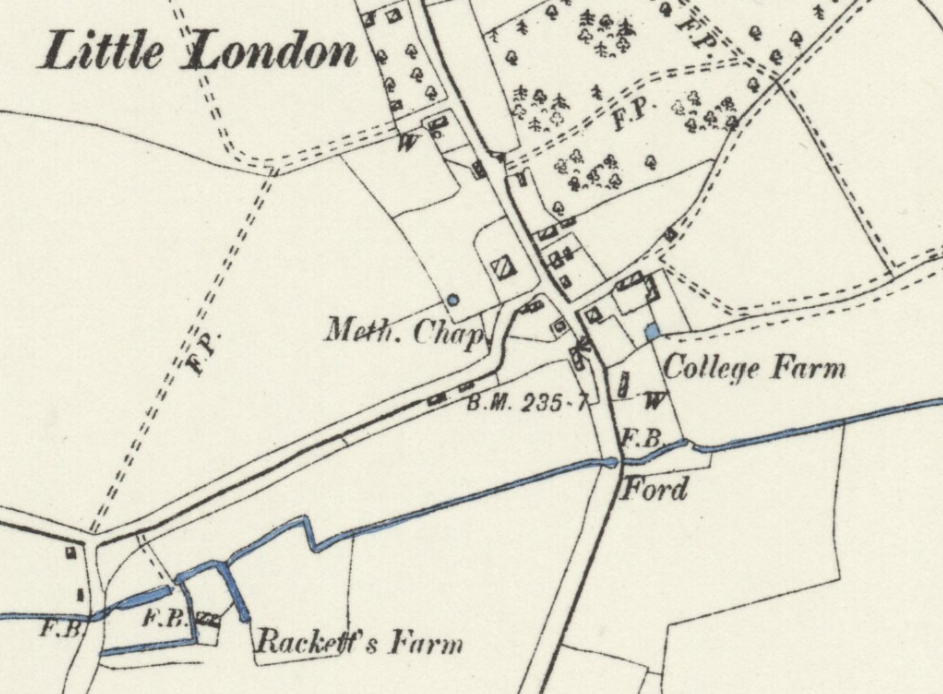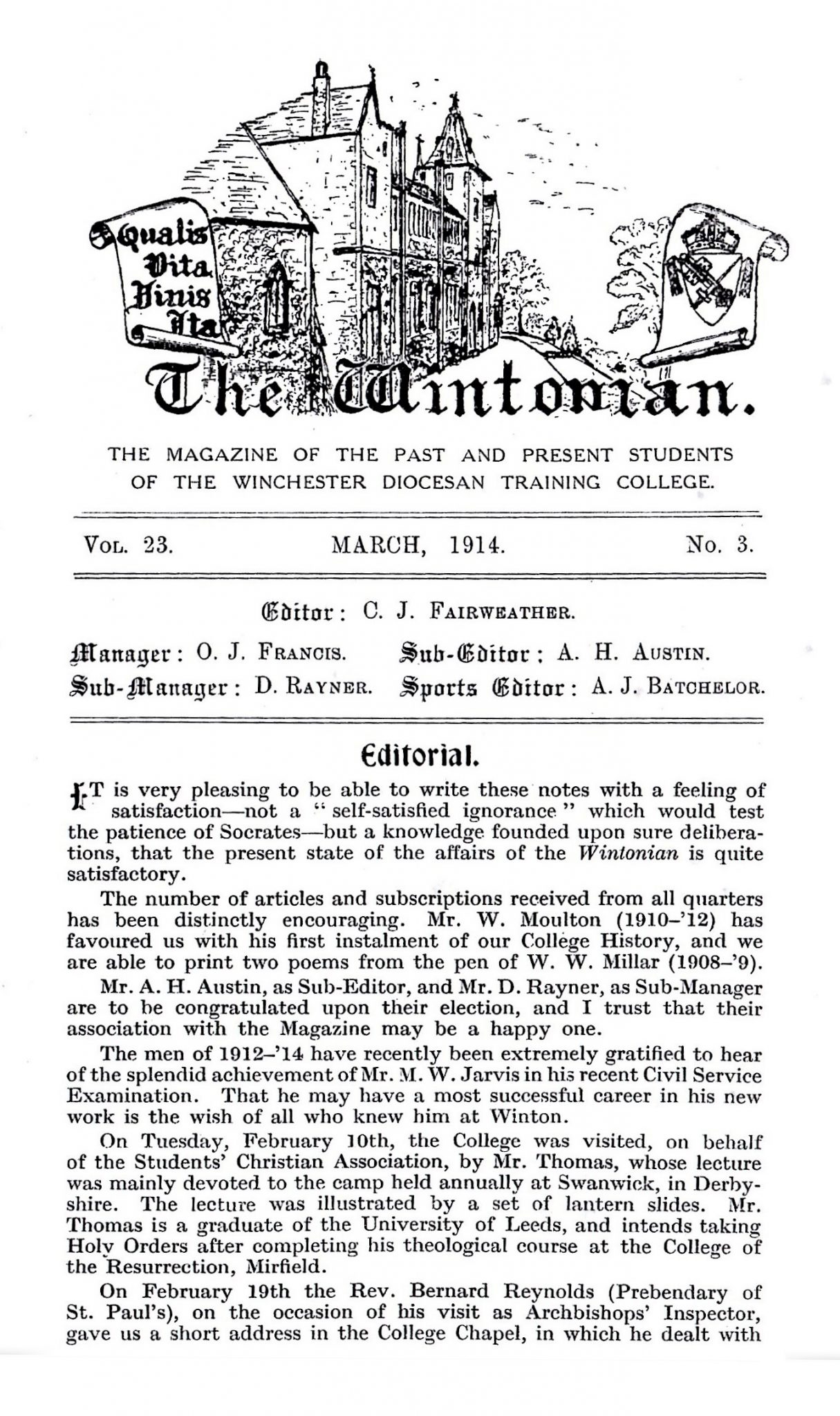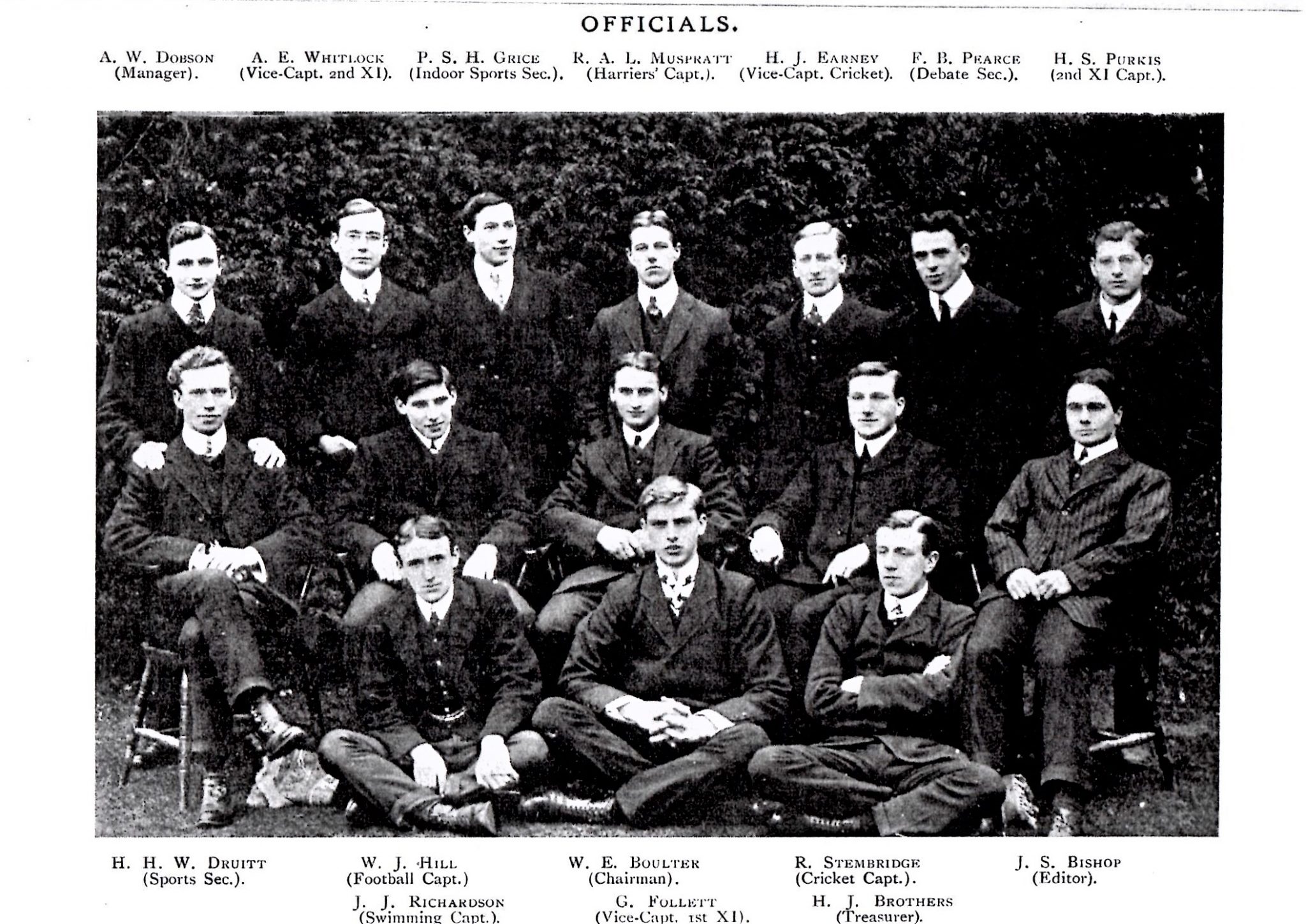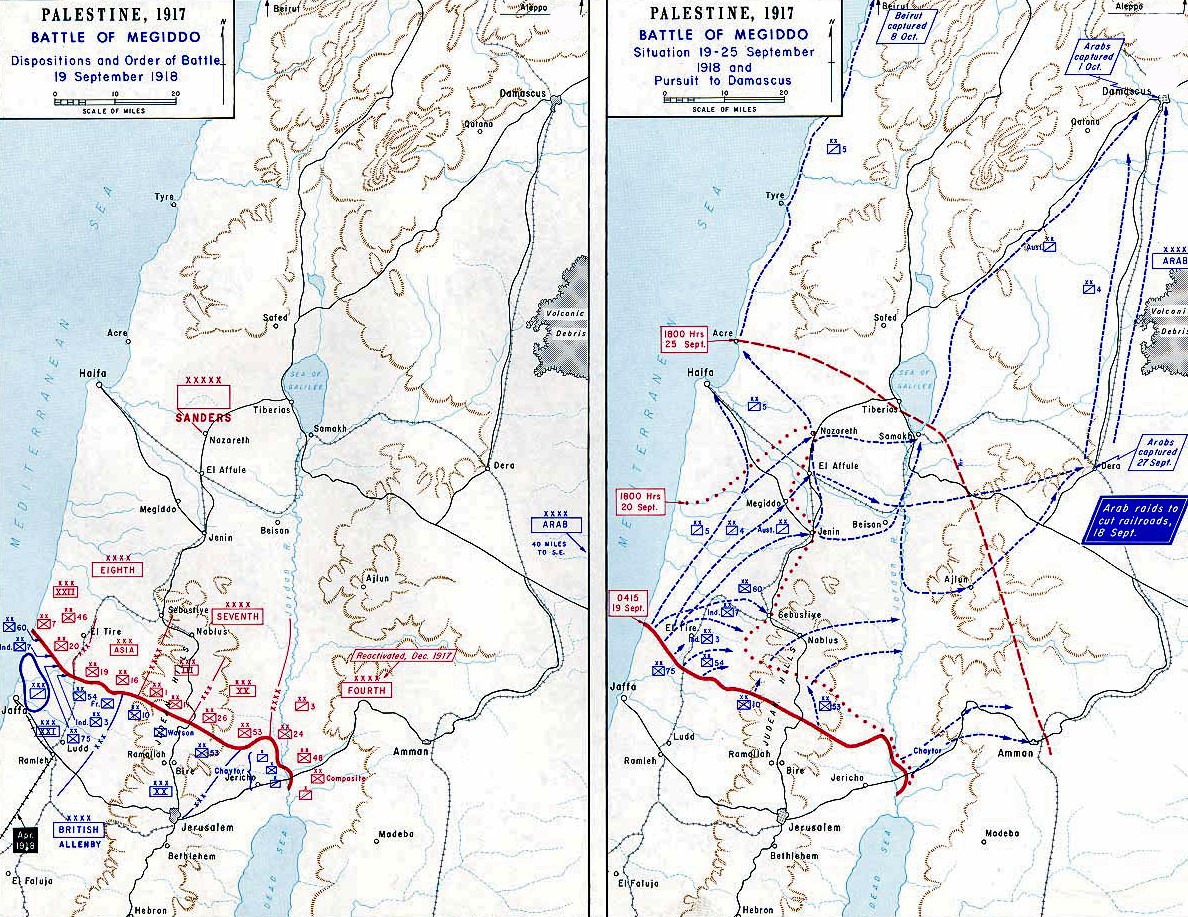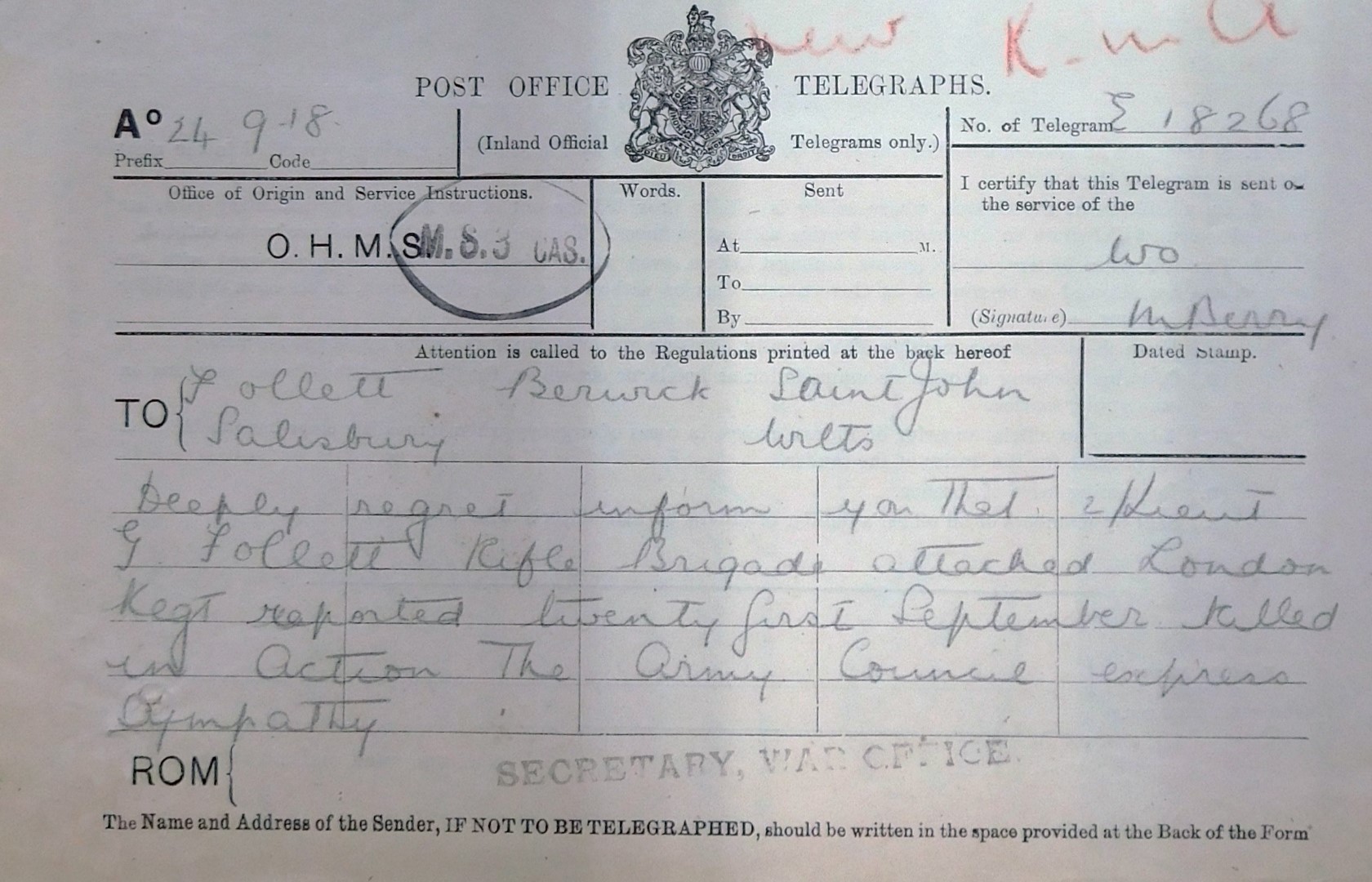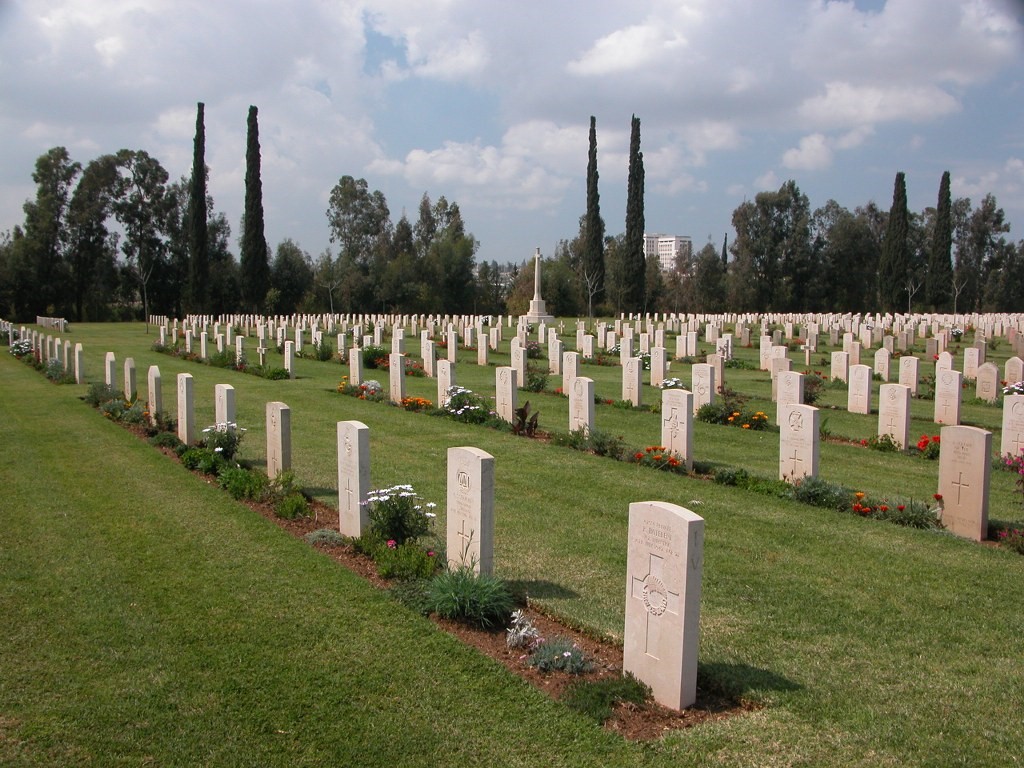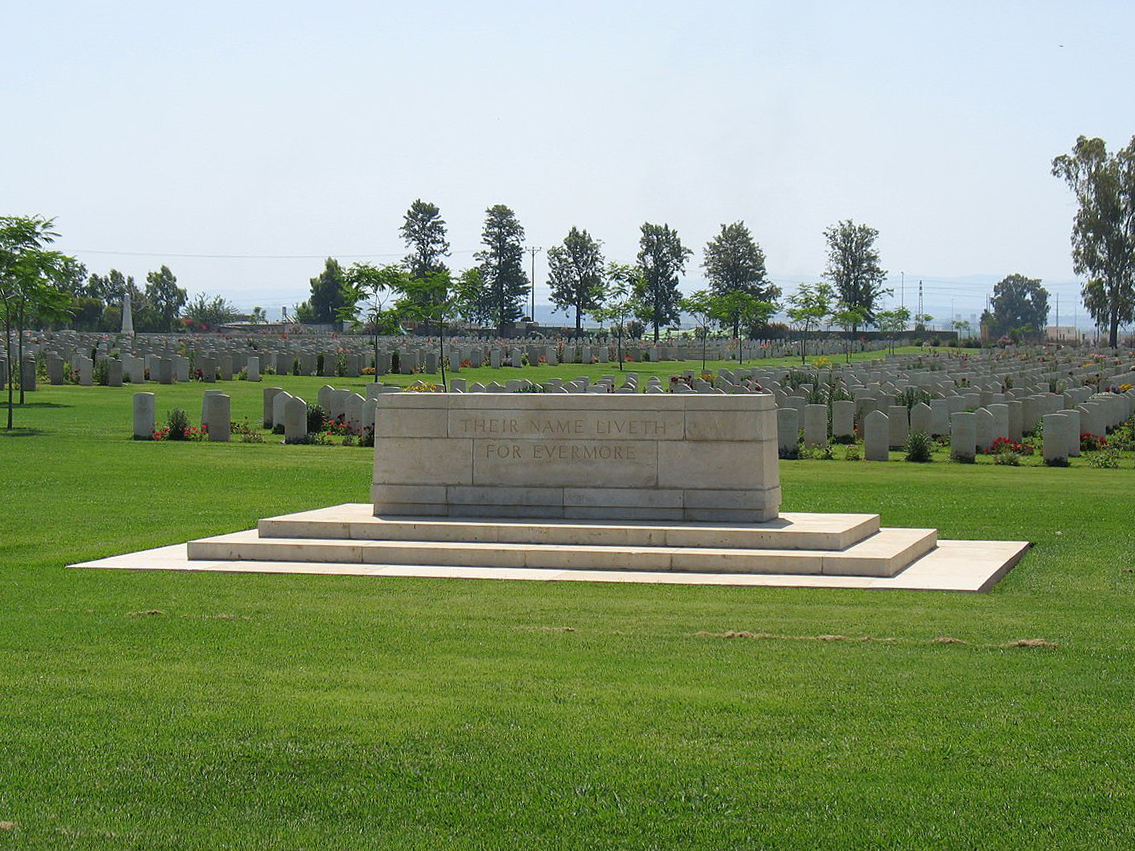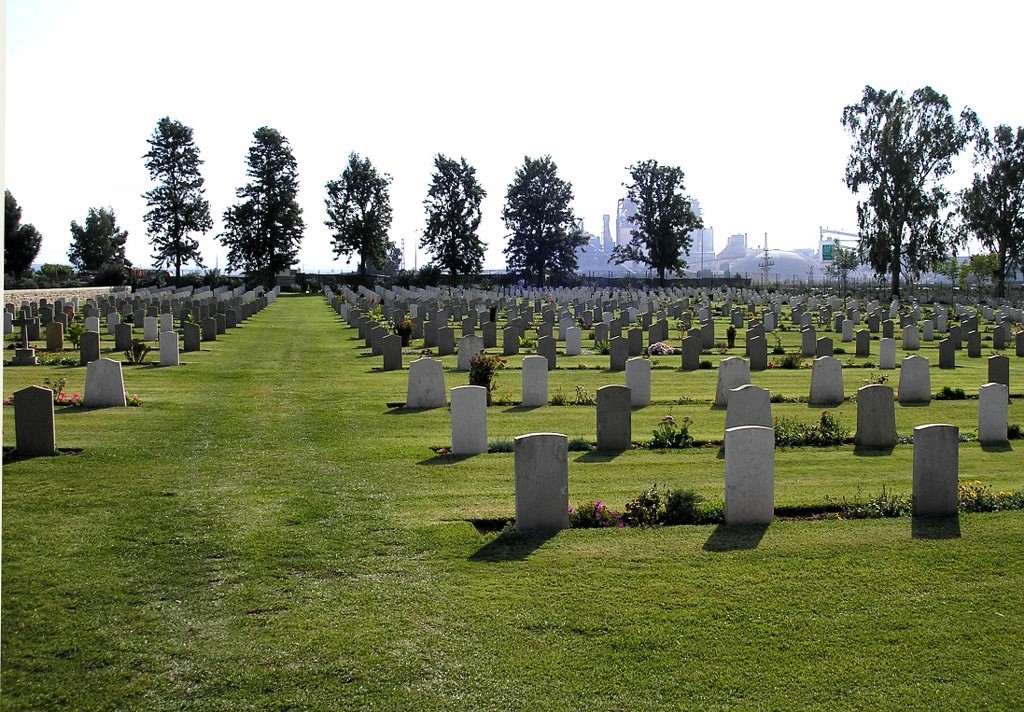George Follett
4th July 1891 – 19th September 1918
Second Lieutenant George Follett, of the 23rd Battalion Royal Fusiliers (Regimental Numbers 1493 and GS/47962), Commissioned in 6th Battalion The Rifle Brigade (Prince Consort’s Own), and attached to the 1st/10th London Regiment, was killed in action in Palestine on 19th September, 1918.
Introducing the Folletts
Three of George’s grandparents were Hampshire-born, all from the villages just to the north of Basingstoke. His maternal grandfather was from Ilsley, in the Berkshire Downs, near Newbury. George’s father, William, was born in 1854 in Pamber, Hants, and his side of the family were farmers, owning their own land in Little London, Pamber Green. William, as firstborn son, took over the 240-Acre farm from his aging father while still in his late teens, though perhaps this may have been too much for him. In 1881 he is recorded as ‘Farmer’ but there is a note that says, ‘Farm given up’. He is living in the farmhouse with his sister. He is however, still recorded as a farmer living at different farms in 1891, 1901 and in 1911 1 and is an employer.
William married Elizabeth Franklin (born in Basingstoke in 1847) on 18th May, 1882 at St Michael’s Church, Basingstoke. She was a grocer’s daughter, and a dressmaker by trade. William and Elizabeth were to have seven children: 3 girls followed by 4 boys.2 All were born while the family lived in and worked College Farm, Little London, near Pamber Green.
Kelly’s Directory of 1898 tells us that ‘The children of this parish [Pamber] attend the schools at Tadley & Monk Sherborne’. The latter is much more likely for the children of Little London as it was closer. George would have had to walk, with his sisters and brothers, the one and a half miles to school which was beside the former Benedictine Priory Church of St. Mary and St. John.3
Sometime prior to 1901 the family moved to Home Farm, East Oakley, just west of Basingstoke, Hampshire. George then attended Oakley National School. The school was run under the auspices of the National Society, which was founded in 1811 as the ‘National Society for Promoting the Education of the Poor in the Principles of the Established Church in England and Wales.’
George showed sufficient promise in his learning to move on to grammar school. He attended Queen Mary’s School 4 in Basingstoke, just over 4 miles from home. The school was a maintained (state funded) grammar school, founded in 1556. 5
His later college Student Record shows that at some point, probably aged 15, he left Queen Mary’s and returned to his old elementary school as a pupil teacher. While there, he received further training and probably attended a pupil teacher centre for day-release and evening classes. In March 1909, at the age of 17, he passed his Preliminary Examination for the Certificate, with a distinction in Geography. This enabled him to apply for a place at teacher training college. Winchester was his choice, where he headed at the end of the school year. Very sadly, just before his leaving home, his oldest sister Annie Mary died at the age of 26.
Student Life
Winchester Training College, 1909-1911
The College at this time had around 80 6 students, most of them on a two-year course. All were men and training to teach. Accommodation was fairly basic with each student having his own dormitory room—this was an area of a larger room, partitioned off with walls that did not reach to the ceiling.
The weekday routine 7 gives us some idea of the disciplines imposed on the students:
6.15am Reveille (by hand-bell in the dormitories)
6.30am Cocoa in the dining hall
6.45am Roll-call followed by a 1-hour lecture
7.45am Morning Chapel
8.30am Breakfast
9am Lectures
10.45am Break
11am Lectures
1pm Lunch
2pm 1½-hour art lesson or psychology or hygiene or criticism
3.30pm Football, cricket, or tennis on the dytche
5pm Tea
7pm Roll-call and supervised Private Study
9.15pm Evening Chapel
9.30pm Supper then bed
10.30pm Lights out
In the couple of references to George in his student days, he seems to have been quite athletic: Sports Day: ‘George Follett came first in the high jump and second in the long jump.’ Also ‘First XI Notes “George was part of the team along with Henry Purkis. Every man deserves congratulations on this victory, since we believe it is the first time, Culham8 has ever been defeated on their own ground by Winton.”’
George’s academic work seems to have been good in some areas while marginal in others. Of the subjects recorded, his exam results were: Reading and Recitation, D; Teaching, D; Music, C; Drawing, B; and Science, B.
We also know from his Army papers that while at College he had been, along with other fellow-students, in the 4th Battalion Hampshire Regiment Territorials.
George appears on two war memorials in Leicestershire: Botcheson War Memorial and Desford School Memorial (the latter is also on the Parish of Desford).9 As he had no other connection with this area, it is likely that his first teaching job after leaving college was at Desford School. In order to complete the process of Certification, all leaving students had to complete two years’ teaching at the same school. We therefore assume that George taught there from 1911 to 1913. Desford School was an Industrial School. The nature and work of an Industrial School will become clear as we turn to George’s next appointment.
The Wintonian tells us that, in the 1913 to 1914 school year, George was teaching at ‘The Boys Home, Bath’. This is more commonly known as Somerset Industrial Home for Boys. Opened in 1866, largely by the efforts of the Chaplain of Bath Gaol, Revd. Osborn, the schools stated aim and purpose was ‘to reclaim abandoned boys, and to rescue those whose unhappy circumstances would inevitably lead them to crime and profligacy’. By the time George joined the staff, the school was using the old militia barracks in Lower Bristol Road, Twerton, Bath, and was registered to accommodate 180 boys.
George would have taught under the Superintendent John Young and his wife and school Matron, Harriet. They had just taken over the reins from John’s father who, with his wife, had been Superintendent and Matron for 38 years.
Although George worked as an Assistant Teacher, duties would have gone far beyond classroom learning. A report in 1897 noted that School had 63 acres of land, located about two miles away, which were cultivated as a farm and market garden. The livestock included 6 cows, 4 horses, a pony, and 200 poultry birds. There was a shop in the town for the sale of produce from the farm. The allocation of boys to various work tasks included 12 on the market garden and farm, 40 to 50 doing outside work, 7 tailors, 7 shoemakers, 2 bakers, 2 carpenters, 2 cow-boys, 2 stable boys, 1 looking after pigs, 5 shop-boys, 14 to 20 in the needle-room, and 15 in the band. The playing field in front of the School was used for football and cricket and matches with outside teams were arranged.
A large room was fitted up with lockers and used in winter as a gymnasium, and in summer as a reading room. In the winter, physical and military drills were given, and magic lantern shows were arranged. A mark system was in operation carrying monetary rewards for good behaviour. Boys who had friends living near were allowed from time to time, if well-behaved, to visit them. Good-conduct boys were also allowed to work out of the school, free of the supervision of the School officials.
Meanwhile, his family had settled to their chosen or allotted stations in life. The 1911 Census records that George’s brothers all stayed on the farm as workers. Amelia was married to a farmer and living nearby in Bramley and Edith was single and living at home.10
By early 1915 the family had moved from Basingstoke area to Easton Farm, near Berwick St John, between Salisbury and Blandford Forum. Follett is an old Dorset name so perhaps they moved back to old family haunts and roots. 11
George’s work at the Industrial School would take him through to the outbreak of war.
At War
George enlisted as a Private in the 23rd Service Battalion Royal Fusiliers on 16th January 1915. His Attestation papers tell us that physically he was in good shape: 6ft 1½in and 12st 11lbs with a 38in chest and a pulse of 70.
The Battalion was also known as the 1st Sportsmen’s Battalion. This would mean George brushed up against some diverse characters:
The Royal Fusiliers would also include two Sportsmen’s battalions (23rd and 24th), which were raised by the then well-known sportswoman Mrs E. Cunliffe-Owen.12 The 1st Sportsmen’s Battalion had a wide cross-section of background and experience. In one hut at the unit’s first camp at Hornchurch the first bed was occupied by the brother of a peer. The second by the man who drove his car … Other beds were occupied by a mechanical engineer, an old Blundell School boy, planters, a mine overseer from Scotland, a man in possession of a flying pilot’s certificate secured in France, an old sea-dog who had rounded Cape Horn on no fewer than nine occasions, a man who had hunted seals, ’with more patches on his trousers than he could count’, as he described it himself, and so on.13
His first 10 months would be based in England. He was promoted to Lance Corporal on 8th July and on 16th November 1915 he landed in France.
George was promoted to Corporal on 2nd June 1916 and three weeks later to Lance Sergeant. On 3rd August 1916, he received a gun shot wound in the right knee. There may be some confusion about the date of the injury as it was not recorded until 4 days later and it was at a time of chaos and heavy losses for the Battalion at the Battle of Delville Wood.
He was evacuated to England on 8th August and there is then a gap in his record, so we do not know how long his recovery took. The next recorded entry is his Commissioning as a 2nd Lieutenant in the 6th Battalion Rifle Brigade, on 28th August 1917.
Inspection of 1st Sportsmen’s Battalion recruits. Photo courtesy of armyservicenumbers
His new Battalion was a reserve Battalion, based in the Isle Sheppey, to supply men to depleted units in theatre of war. He was fairly quickly Attached to the 1st/10th London Regiment and would have sailed to join them in Palestine14 where they were engaged in pushing back the Ottoman (Turkish) forces who were fighting alongside German units.
George’s Battalion had come under the command of XXI Corps that August, and he would have joined them in September. Between 27th October and 7th November his Division participated in the third battle and eventual capture of Gaza. On 7th November, they occupied Belah Trench, Turtle Hill, and on 19th November, the Division reached Ludd15 and took over part of the front line covering Jaffa.
The Battalion were then involved in the Battle of Jaffa, on the 21st and 22nd December 1917, and the following year, on 12th March 1918, advanced the line another 4 miles with the 1/10th Londons capturing Mejdel Yaba, just inland of Jaffa. On April 9–10th they were again in action at Berukin (Bruqin/Bruchin), 38 miles inland in the hill country.
The major set piece Battle of Megiddo 16 was next and was to prove very successful. It was a massive action, planned to break the joint German/Turkish army and push them north. The Egyptian Expeditionary Force under the command of General Allenby comprised British, Commonwealth and French forces totalling 69,000 infantry and cavalry and 540 guns, spread across a 65-mile front from the coast 12 miles north of Jaffa to the hills east of the Dead Sea.
George’s 54th Division participated the Battle of Sharon, the opening action of the Battle of Megiddo. On the 19th September, the 54th Division advanced on a front of 3,000 yards, and by 0700 had captured Crown Hill, Kefr Kasim and Jevis Tepe. At 1105 Oghlu Tepe was stormed by the 1/10th Londons and 1/4th Northamptons. During this action the 1/10th Londons rushed and captured two 5.9in howitzers on the high ground overlooking the Wadi Kanah. It was in this engagement that George fell.
He was first buried in Jiljulie (Jaljulya) District Military Graves about 10 miles north east of Tel Aviv where the Wadi Rabah opens to the plain of Sharon, but later exhumed and reburied at Ramleh War Cemetery 7 miles south east of Jaffa.17
Obituary in the Western Daily Press of Wednesday, 30th October, 1918;
2ND LIEUT. G. FOLLETT.
Second Lieut. George Follett, London Regt., who was Assistant Master of the Somerset Industrial Home for Boys, Bath, has been killed in action in Palestine. He was a fine athlete, and joined the Sportsmen’s Battalion of the Royal Fusiliers in 1914, getting his commission in 1916 [sic].
In the inventory of his personal effects there were the usual items in his valise, along with letters and photographs. Two items stand out: 10 rolls of film and a pair of football boots. It is left to us to wonder what images were captured of his experiences, and to reflect on the sadness of a young sportsman cut down in his prime.
He is remembered on the Queen Mary’s School memorial tablet.
Researcher and Author: John Vickers
Footnotes
[1] The moving from farm to farm would suggest tenantry
[2] Annie Mary (b.1883), Edith (b.1884), Amelia (b.1886), Ernest (b.1887), William Thomas (b.1889), George (b.1891) and Horace James (b.1893)
[3] The parishioners were granted permission to use the ancient Priory Church by Queen’s College, Oxford (it had been granted to the Provost and fellows by Edward III). It is the burial place of William of Drogheada (d.1245).
[4] Initially called Holy Ghost School. It was to become Queen Mary’s and Charles Chute School in 1970 then by 1976 was The Vyne School. It is now The Vyne Community School.
[5] His school attendance is known because of his Army Attestation form and his inclusion on the school memorial tablet
[6] Figure is for 1912
[7] “On Wednesdays and Saturdays the time-table was varied to allow for set matches being played. The selected teams were excused study at noon, while the rest of the students did Swedish drill or company drill with small-arms under the company officer, or rifle-cleaning and ‘brassing-up’ of accoutrements in the armoury. On these two days the whole afternoon was free until 7 p.m., when debates or smoking concerts would be held.’” From A History of King Alfred’s College by Martial Rose
[8] Culham College was founded in 1851 Samuel Wilberforce, Bishop of Oxford, as a Diocesan Training College for Schoolmasters. The buildings now are occupied by the European School, Culham.
[9] With thanks to Pat Crane of Desford and District Local History Society for this information.
[10] She never married, and died in 1975 in Dorset
[11] George’s Army records tell us that this state of affairs remained unchanged in September 1918 with the exception of Ernest, who had left home and was at Hopgood Farm, Stoke, Hants
[12] All-round sportswoman and daughter of Sir Francis Phillip and Jenny (nee Von Reitzenstein) Cunliffe-Owen. Her father was the director of the prestigious South Kensington Museum, which would later become the Victoria and Albert Museum. In early September 1914, ‘Mrs. Cunliffe-Owen, on rallying some men-friends for not being in khaki, was challenged to raise a battalion of middle and upper-class men up to the age of forty-five. She promptly went with them to a post-office and telegraphed to Lord Kitchener: “Will you accept complete battalion of upper and middle class men, physically fit, able to shoot and ride, up to the age of forty-five?” The reply was, “Lord Kitchener gratefully accepts complete battalion.”’ (The Sportsman’s Gazette)
[13] From Call to Arms: The British Army 1914-18 by Charles Messenger
[14] They had been in the Middle East since 1916
[15] Present-day Lod, 7 miles southeast of Jaffa (Tel Aviv)
[16] Megiddo, in the Plain of Jezreel, lends its name to the New Testament apocalyptic Battle of Armageddon (from Har Megiddo: Mount Megiddo)
[17] Memorial No. 22749246
Sources
Ancestry (2018). Home page. [online] Available at: www.ancestry.co.uk [Accessed 2018]
Army Service Numbers 1881-1918 (2009). The Royal Fusiliers – Sportsman’s Battalions. [online] Available at: http://armyservicenumbers.blogspot.co.uk/2009/05/royal-fusiliers-sportsmans-battalions.html [Accessed 2018]
British Newspaper Archive (2018). Western Daily Press, Wednesday, 30th October, 1918. [online] Available at: www.britishnewspaperarchive.co.uk [Accessed 2018]
Children’s Homes (2018). Somerset Industrial Home for Boys, Bath, Somerset. [online] Available at: http://www.childrenshomes.org.uk/BathIH/ [Accessed 2018]
Commonwealth War Graves Commission, (2018). Home page. [online] Available at www.cwgc.org/ [Accessed 2018]
Messenger, C. (2015) Call to Arms: The British Army 1914-18. London: Weidenfeld & Nicolson
OakleywithWootton.org (2018). A Little Bit of History: St Leonard’s, Oakley. [online] Available at: http://www.oakleywithwootton.org.uk/sl_v3/?page_id=1645 [Accessed 2018]
Rose, M. (1981). A history of King Alfred’s College, Winchester 1840-1980. London: Phillimore
The Sportsman’s Gazette (1914). Emma Pauline Cunliffe-Owen. [online] Available at: http://sportsmansgazette.blogspot.co.uk/2014/09/emma-pauline-cunliffe-owen.html [Accessed 2018]
Vickers, J. The University of Winchester Chapel Memorial Rail image
| University of Winchester Archive “ Hampshire Record Office | ||
| Reference code | Record | |
| 47M91W/ | P2/4 | The Wintonian 1899-1900 |
| 47M91W/ | P2/5 | The Wintonian 1901-1902 |
| 47M91W/ | P2/6 | The Wintonian 1903-1904 |
| 47M91W/ | P2/7 | The Wintonian 1904-1906 |
| 47M91W/ | P2/8 | The Wintonian 1905-1907 |
| 47M91W/ | P2/10 | The Wintonian 1908-1910 |
| 47M91W/ | P2/11 | The Wintonian 1910-1914 |
| 47M91W/ | P2/12 | The Wintonian 1920-1925 |
| 47M91W/ | D1/2 | The Student Register |
| 47M91W/ | S5//5/10 | Photograph of 5 alumni in Mesopotamia |
| 47M91W/ | Q3/6 | A Khaki Diary |
| 47M91W/ | B1/2 | Reports of Training College 1913-1914 |
| 47M91W/ | Q1/5 | Report and Balance Sheets 1904- 1949 |
| 47M91W/ | R2/5 | History of the Volunteers Company 1910 |
| 47M91W/ | L1/2 | College Rules 1920 |
| Hampshire Record Office archive | ||
| 71M88W/6 | List of Prisoners at Kut | |
| 55M81W/PJ1 | Managers’ Minute Book 1876-1903 | |
| All material referenced as 47M91W/ is the copyright of The University of Winchester. Permission to reproduce photographs and other material for this narrative has been agreed by the University and Hampshire Record Office. | ||



